 July 9, 2020 John E. Ross, KD8IDJ, Editor
| |||||||
IARU HF World Championship is Major Mid-Year Event for Everyone The International Amateur Radio Union (IARU) HF World Championship over the July 11 - 12 weekend offers an opportunity for operators to put their stations to the test ahead of the fall-winter contest season. Casual contesters are welcome. This everybody-works-everybody event kicks off at 1200 UTC on Saturday, July 11, on 160, 80, 40, 20, 15, and 10 meters and continues for the next 24 hours. Despite rather dismal HF conditions recently, the competition is expected to keep the bands hopping on both phone and CW; participants may operate either or both modes. Highlighting the activity will be the IARU headquarters (HQ) stations and officials on the air from around the world, although, as the IARU notes, HQ stations may not be active at typical levels.
Participating stations send a signal report and ITU zone (or IARU member-society abbreviation). The IARU HF Championship web page includes ITU zone borders for the US and Canada. "It is essential that the global COVID-19 pandemic be taken into account, including by IARU member-society HQ station teams," the IARU said in announcing this year's event. The IARU stressed that multioperator and IARU member-society HQ stations "must adhere strictly to the regulations and social distancing guidelines in effect issued by the responsible health authorities and the World Health Organization, even if observing the guidelines is not legally required in their locations." This requirement also applies to single-operator stations and especially to stations hosting guest operators. The objective of the IARU HF World Championship is "to support amateur self-training in radiocommunications including improving amateur operating skills, conducting technical investigations, and intercommunicating with other amateurs around the world, especially IARU member-society headquarters stations." Special rules governing IARU member-society HQ stations permit using multiple sites, if national regulations permit.
The HQ list includes ARRL. Members of the Tennessee Contest Group (TCG) will operate as ARRL HQ station W1AW/4, while IARU HQ Station NU1AW will be operated remotely by a team of operators using WW2DX facilities on the coast of Maine. In addition to HQ stations, members of the IARU Administrative Council (AC) and the three IARU regional executive committees will send AC, R1, R2, and R3, as appropriate. IARU President Tim Ellam, VE6SH, will be active for a limited period, giving out the AC multiplier. IARU HQ/official stations and ITU zones are multipliers, which count per band but not per mode, but contacts count per mode per band. Contacts with IARU member-society HQ stations and officials do not count as zone multipliers. Listen for this one: In Bulgaria, the Vakarel broadcast transmitter has been off the air since 2015. The antenna, erected in 1937, is 215 meters (705 feet). During the IARU contest, the Bulgarian Federation of Radio Amateurs (BFRA) HQ station will use the antenna on 80 meters as LZ0AA. After the contest, the antenna will be taken down. -- Thanks to The Daily DX for some information Maritime Mobile Service Network Comes to the Aid of Vessel in Distress The Maritime Mobile Service Net (MMSN) on 14.300 MHz came to the assistance of a sailing vessel in distress on June 25. MMSN control operator Steven Carpenter, K9UA, took a call on 20 meters from Ian Cummings, KB4SG, the skipper of the Mystic Lady, then some 40 miles east of Florida. Cummings reported that his engine had failed as he was attempting to return to his home port of Stuart, Florida. He not only had insufficient wind, but a strong current was carrying the vessel out to sea. Cummings had been unable to reach any station via his VHF marine radio, because he was too far from the coast. Assisting in the call was "A major concern was that the vessel was heading directly towards a lee shore," the MMSN reported. "Lee shores are shallow, dangerous areas which are a hazard to watercraft. Vessels could be pushed into the shallow area by the wind, possibly running aground and breaking up." Carpenter contacted Cummings' family, who had already called the Sea Tow marine towing service. Sea Tow advised Carpenter to tell the captain to head closer to shore by sailing west, if possible. Carpenter told Cummings that if he was unable to get nearer to shore, he would notify the US Coast Guard, which was already monitoring the situation. As the MMSN reported, "The Mystic Lady was able to make some headway, but it was very slow. Members of the MMSN made additional calls via landline to the captain's family as to the ongoing status of those on board. The family was concerned but relieved that communication was established and that all were well." Several hours later, the captain advised that the wind had picked up, allowing him to head close enough to shore for Sea Tow to reach the vessel and take it back to port. The Pacific Seafarers' Net, which monitors 14.300 MHz from the West Coast after the MMSN secures at 0200 UTC, kept in touch with the Mystic Lady into the night while it was under tow. The tired, grateful captain later messaged the net, "A million thanks to everyone last night who helped rescue us on 14.300. Everyone chipped in as we drifted north in the Gulf Stream 60 miles headed to a lee shore. The MMSN net control and several others stayed with us for hours, phoned people, and were immensely helpful. The situation on board was dangerous. We are now safely under tow home. You folks are amazing!" In operation since 1968, the MMSN monitors 14.300 MHz 70 hours a week to assist vessels and others in need of assistance. -- Thanks to MMSN Net Manager Jeff Savasta, KB4JKL Newer Solar Cycle 25 Forecast Runs Counter to Consensus Scientists associated with the National Center for Atmospheric Research, the University of Maryland, NASA Goddard Space Flight Center, and other institutions are offering a "bold prediction" on how Solar Cycle 25 will play out. In a paper, "Overlapping Magnetic Activity Cycles and the Sunspot Number: Forecasting Sunspot Cycle 25 Amplitude," they assert that the next sunspot cycle will be of major proportions. The forecast stands in stark contrast to the consensus of forecasters who predict that the magnitude of the nascent Cycle 25 may not be much different from the current unremarkable solar cycle, which appears to have reach its low point. "From the dawn of modern observational astronomy, sunspots have presented a challenge to understanding -- their quasi-periodic variation in number, first noted 160 years ago, stimulates community-wide interest to this day," the abstract points out. "A large number of techniques are able to explain the temporal landmarks, (geometric) shape, and amplitude of sunspot 'cycles,' however, forecasting these features accurately in advance remains elusive."
The paper notes that recent studies have illustrated a relationship between the sun's 22-year Hale magnetic cycle and the production of sunspot cycle landmarks and patterns, but not the amplitude of the cycle. "Using discrete Hilbert transforms on 270 years of monthly sunspot numbers to robustly identify the so-called 'termination' events -- landmarks marking the start and end of sunspot and magnetic activity cycles -- we extract a relationship between the temporal spacing of terminators and the magnitude of sunspot cycles," the abstract explains. "Given this relationship and our prediction of a terminator event in 2020, we deduce that Sunspot Cycle 25 will have a magnitude that rivals the top few since records began. This outcome would be in stark contrast to the community consensus estimate of Sunspot Cycle 25 magnitude."
According to the paper, low-amplitude solar cycles appear to correspond with widely separated terminators, while larger-amplitude cycles correspond to more narrowly separated terminators. "[O]ur best estimate for the [sunspot number] amplitude of Solar Cycle 25 is 233 spots, with a 68% confidence that the amplitude will fall between 204 and 254 spots," the paper posits. "We predict with 95% confidence that the Cycle 25 amplitude will fall between 153 and 305 spots." The researchers concede that their forecast is outside of the scientific consensus, based on different paradigms. "Over the coming months, as [Solar Cycle] 25 matures, it will become evident which of these paradigms is most relevant," the paper says. "Very early indications of the spot pattern are appearing at higher-than-average latitudes (â¼40°). Historically, high-latitude spot emergence has been associated with the development of large amplitude sunspot cycles -- only time will tell." ARRL Podcasts Schedule
The On the Air and Eclectic Tech podcasts are sponsored by Icom. Both podcasts are available on iTunes (iOS) and Stitcher (Android) as well as on Blubrry -- On the Air | Eclectic Tech. The K7RA Solar Update Tad Cook, K7RA, Seattle, reports: We saw a new sunspot on July 4, but it was from the declining Solar Cycle 24 and lasted only through the next day. Sunspot numbers were 12 and 11, for an average daily sunspot number of 3.3 for the week. Prior to July 4, no sunspots had been observed since June 15. The average daily solar flux was 68.5; the previous week, it was 68.6. The average daily planetary A index inched up from 4.7 to 5.1, and the average daily middle latitude A index shifted from 4.7 to 6.4.
Predicted planetary A index is 8 on July 9; 5 on July 10 - 12; 8 on July 13; 5 on July 14 - 26; 8 on July 27 - 28; 5 on July 29 - 30; 12, 10, 8, and 8 on July 31 - August 3, and 5 on August 4 - 22. Sunspot numbers for July 2 - 8 were 0, 0, 12, 11, 0, 0, and 0, with a mean of 3.3. The 10.7-centimeter flux was 68, 69.3, 69.5, 69.4, 68.5, 67.7, and 67.2, with a mean of 68.5. Estimated planetary A indices were 4, 4, 7, 10, 5, 4, and 2, with a mean of 5.1. Middle latitude A index was 5, 5, 9, 13, 6, 5, and 2, with a mean of 6.4. A comprehensive K7RA Solar Update is posted Fridays on the ARRL website. For more information concerning radio propagation, visit the ARRL Technical Information Service, read "What the Numbers Mean...," and check out K9LA's Propagation Page. A propagation bulletin archive is available. Monthly charts offer propagation projections between the US and a dozen DX locations. Share your reports and observations. Just Ahead in Radiosport
See the ARRL Contest Calendar for more information. For in-depth reporting on amateur radio contesting, subscribe to The ARRL Contest Update via your ARRL member profile email preferences. QSO Today Virtual Ham Expo Announces Full Lineup of Speakers The first QSO Today Virtual Ham Expo, which takes place the weekend of August 8 - 9, has confirmed what it's calling "a packed lineup of over 70 great speakers" for the ARRL-sanctioned event. Attendance is free and registration is open. Presentations will cover a range of topics, with two tracks focused on providing hands-on, practical advice for those just getting started in amateur radio. Steve Johnston, WD8DAS, will demonstrate basic soldering techniques for repairing equipment and building projects. For experienced operators, topics will cover new techniques, equipment upgrading, 3D printing, and more. Glenn Johnson, W0GJ, will attempt to answer the question, "Is 3 dB Worth a Divorce?" and cover a wide range of antenna topics. Jim Veatch, WA2EUJ, will explain how to build a QRP radio. In his presentation, "The Slot Antenna -- Undiscovered Country for Most Hams," John Portune, W6NBC, will demonstrate how a satellite TV dish can be "slotted" to make an effective outdoor 2-meter or UHF antenna for use in antenna-restricted neighborhoods. Prominent youth educator Carole Perry, WB2MGP, will moderate a lineup featuring amateur radio's future leaders. Audrey McElroy, KM4BUN, will speak on "Getting Girls Involved in STEM, Specifically Amateur Radio!", while hot-air ballooning will be the focus of a talk by Jack McElroy, KM4ZIA, "Highly Flying Kids with HAB." QSO Today's Eric Guth, 4Z1UG, says that one challenge to any ham radio convention, whether in person or virtual, is keeping the content of presentations from becoming overly complicated and overwhelming. "For our inaugural virtual Expo, we've made sure that there are great speakers for both beginners and experienced hams," Guth said. "We've asked all of our speakers to be laser focused on their topics while providing hands-on, practical advice." Each presentation will wrap up with a live question-and-answer session. For more information or to register, visit the QSO Today Virtual Ham Expo website. Attendance is free, and there are early bird prize incentives for registering by July 24. Announcements July 9
ARRL Seeks Awards and Programs Assistant ARRL has invited applications for the position of Awards and Programs Assistant at ARRL Headquarters in Newington, Connecticut. This is a full-time, non-exempt opening in the Radiosport and Field Services Department. The pay range is from $16.08 to 19.30 per hour. The Awards and Programs Assistant assists with all Radiosport and Field Services Department activities, with an initial priority on Logbook of The World (LoTW) support. Other duties may involve The successful candidate should have a well-rounded knowledge of amateur radio, an Amateur Extra-class license, and 2 years of operating experience; the ability to quickly understand and explain software functionality, and proficiency in keyboarding and data entry. This individual should have attained DXCC, regularly submit contest logs to sponsors, use LoTW, and be able to resolve issues efficiently. A bachelor's degree is preferred. The ideal candidate will have excellent interpersonal, telephone, and listening skills and be proficient in public presentations. Some overnight travel may be required. To apply, submit a cover letter and resume via mail, email, or fax to ARRL, c/o Monique Levesque, 225 Main St., Newington, CT 06111 (fax 860-594 -0298). For complete position information, visit ARRL Employment Opportunities and scroll down to "Awards and Programs Assistant." ARRL is an equal opportunity employer. Washington Club Conducts Outdoor Amateur Exam Session Parking lots may be replacing community centers, schools, and clubhouses as convenient locations to conduct amateur radio examination sessions. On June 20, the Mike and Key Amateur Radio Club in Washington took over a Boeing parking lot to administer tests under the ARRL Volunteer Examination Coordinator (ARRL VEC). Volunteer Examiner Scott Robinson, AG7T, said his team had been unable to administer exam sessions since early March. "Based upon King County and Washington State COVID guidance, we thought we could give an outdoor session using one of Boeing's parking lots in Renton," Robinson told ARRL. "That required a lot of work to organize."
Robinson said the team developed a COVID-19 mitigation plan that detailed how the examiners would address several major areas. These included health screening of VEs and exam candidates, social distancing in all aspects of the session, sanitation in setting up the test area and in session processes, and contact tracing. "With those details agreed to, an information document was produced for the examinees that listed a set of requirements each of them needed to meet," Robinson said. "For example, no carpooling to the session. Each examinee who agreed to the requirements was then registered for the session." Candidates had to register in advance via email, at which time they would receive directions to the exam session location and requirements. A custom set of test booklets were produced for single use and then disposed of. "We used plastic sheet protectors to ensure minimal handling of examinees' documents by the VEs," Robinson explained. "These were also thrown away." Examinees parked in every other parking spot, facing the VE area in the center of the lot. This allowed the VEs to supervise those taking exams by looking through car windows. "We had 24 examinees at the session and gave 29 exams, leading to 14 Technicians, seven Generals, and two Amateur Extras," Robinson said, noting that an additional 10 candidates are on the waiting list. "We are going to do this again on the third Saturday in July." Annual KPH "Night of Nights" Canceled The Maritime Radio Historical Society (MRHS) and the National Park Service have announced that the annual KPH Night of Nights has been canceled due to COVID-19 precautions. This would have been the 21st such event, which commemorates what is believed to be the last commercial Morse transmission in the US.
While KPH, KFS, and K6KPH will not be on the air for Night of Nights XXI, MRHS members will be active from home. Members will use their own call signs on the usual K6KPH frequencies of 3550, 7050, and 14,050 kHz starting at 0001 UTC on July 13 (the evening of July 12 in North American time zones) and will send the Night of Nights opening message traditionally transmitted via KPH. They will then stand by for calls or will call "CQ NON" or "CQ Night of Nights." Listen for WB6OVV, N6BBF, WB6UZX, AA6IF, N6AD, W6AWO, W6DHM, and possibly others. In Brief...
Upcoming ARRL Section, State, and Division Conventions Note: Many conventions and hamfests have been canceled or postponed due to the coronavirus pandemic. Check the calendar of canceled events on the ARRL website.
Find conventions and hamfests in your area. ARRL -- Your One-Stop Resource for . .
Subscribe to...
Free of charge to ARRL members...
| |||||||
.JPG)
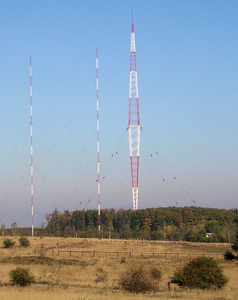
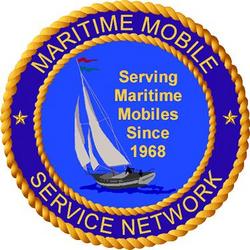 Robert Wynhoff, K5HUT, also an MMSN net control operator. Cummings said his vessel, with one passenger on board, was drifting northwest toward the South Carolina coast.
Robert Wynhoff, K5HUT, also an MMSN net control operator. Cummings said his vessel, with one passenger on board, was drifting northwest toward the South Carolina coast..JPG)
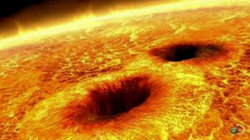
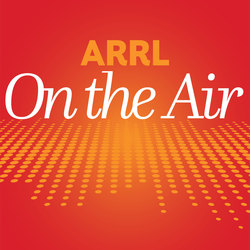 The latest episode of the On the Air podcast (Episode 7) features tips for soldering a PL-259 connector onto the end of a coaxial cable, and information on beginner courses for hams who want to serve their communities during disasters and other incidents. The On the Air podcast is a monthly companion to On the Air magazine, ARRL's magazine for beginner-to-intermediate ham radio operators.
The latest episode of the On the Air podcast (Episode 7) features tips for soldering a PL-259 connector onto the end of a coaxial cable, and information on beginner courses for hams who want to serve their communities during disasters and other incidents. The On the Air podcast is a monthly companion to On the Air magazine, ARRL's magazine for beginner-to-intermediate ham radio operators.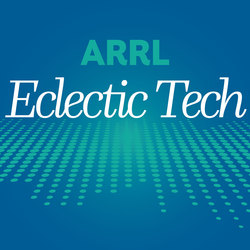 The latest episode of the Eclectic Tech podcast (Episode 11), available on Thursday, July 2, will cover
The latest episode of the Eclectic Tech podcast (Episode 11), available on Thursday, July 2, will cover 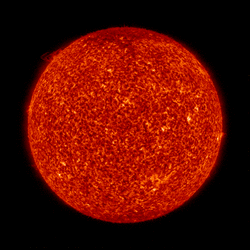 The 45-day outlook for solar flux does not look promising, with no values predicted at 70 or above. Predicted solar flux is 68 on July 9 - 24; 69 on July 25 - August 8; 68 on August 9 - 20, and 69 on August 21 - 22.
The 45-day outlook for solar flux does not look promising, with no values predicted at 70 or above. Predicted solar flux is 68 on July 9 - 24; 69 on July 25 - August 8; 68 on August 9 - 20, and 69 on August 21 - 22. Marcel Stieber, AI6MS, will offer an overview of common battery types, discussing the pros and cons of each -- including battery chemistry, common uses and misuses, and everyday application tips.
Marcel Stieber, AI6MS, will offer an overview of common battery types, discussing the pros and cons of each -- including battery chemistry, common uses and misuses, and everyday application tips.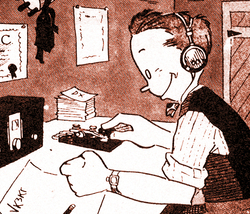 affiliated clubs on the RAC server at little or no cost, depending on how the club's domain is set up.
affiliated clubs on the RAC server at little or no cost, depending on how the club's domain is set up.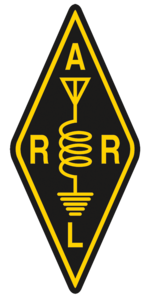 supporting DXCC and other awards programs, W1AW operations, and contest program and field service support. This individual also may be assigned special projects and would represent ARRL in public forums worldwide.
supporting DXCC and other awards programs, W1AW operations, and contest program and field service support. This individual also may be assigned special projects and would represent ARRL in public forums worldwide.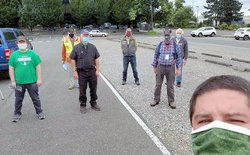
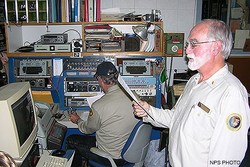
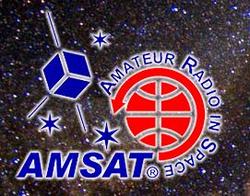 AMSAT has announced the 2020 Board of Directors slate of candidates. The following candidates for seats on the AMSAT-NA Board of Directors have been found to have their membership in good standing and their nomination credentials in order: Howard DeFelice, AB2S; Mark Hammond, N8MH; Jeff Johns, WE4B; Robert McGwier, N4HY; Bruce Paige, KK5DO, and Paul Stoetzer, N8HM. AMSAT will elect three voting members of the Board this year, with seats going to the three candidates receiving the greatest number of votes. Two alternates will be chosen, based on the next highest number of votes received. Ballots will be mailed to AMSAT members by July 15. -- Thanks to AMSAT News Service via AMSAT Secretary Brennan Price, N4QX
AMSAT has announced the 2020 Board of Directors slate of candidates. The following candidates for seats on the AMSAT-NA Board of Directors have been found to have their membership in good standing and their nomination credentials in order: Howard DeFelice, AB2S; Mark Hammond, N8MH; Jeff Johns, WE4B; Robert McGwier, N4HY; Bruce Paige, KK5DO, and Paul Stoetzer, N8HM. AMSAT will elect three voting members of the Board this year, with seats going to the three candidates receiving the greatest number of votes. Two alternates will be chosen, based on the next highest number of votes received. Ballots will be mailed to AMSAT members by July 15. -- Thanks to AMSAT News Service via AMSAT Secretary Brennan Price, N4QX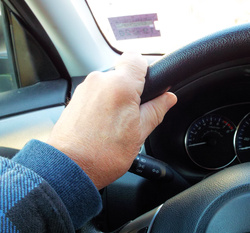 ARRL Central Division Director Kermit Carlson, W9XA, points out that a new Indiana "hands-free" driving law carves out an exception for ham radio mobile operation. "The hands-free law applies to electronic communications devices which includes cell phones, tablets, and smart-watches," a Q&A on the law explains. "Amateur radio, two-way radio, and citizens band (CB) may be used under the hands-free law, but drivers are required to do so in a safe manner." The Q&A notes that "holding a smartphone or tablet while driving is a significant factor in crashes caused by distracted driving."
ARRL Central Division Director Kermit Carlson, W9XA, points out that a new Indiana "hands-free" driving law carves out an exception for ham radio mobile operation. "The hands-free law applies to electronic communications devices which includes cell phones, tablets, and smart-watches," a Q&A on the law explains. "Amateur radio, two-way radio, and citizens band (CB) may be used under the hands-free law, but drivers are required to do so in a safe manner." The Q&A notes that "holding a smartphone or tablet while driving is a significant factor in crashes caused by distracted driving."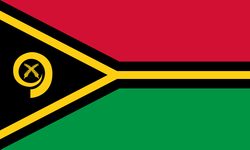 A special event will celebrate the 40th anniversary of Vanuatu's independence On July 30, 1980, the Republic of Vanuatu gained its independence. France and the UK claimed parts of the archipelago, and in 1906, they agreed on a framework for jointly managing it as the New Hebrides. In celebration of the 40th anniversary of independence, all three members of the Vanuatu Amateur Radio Society (VARS) will operate special event station YJ40IND during the month of July. Activity will be according to the individual operators' schedules, but is expected to occur mostly during late afternoons and evenings (0600 - 1000 UTC). A greater emphasis will be made over weekends and on Independence Day, July 30. Operators should look for activity on 40, 20, and 15 meters, where propagation is expected. On FT8 (normal or as the Fox) will be Rod, YJ8RN. On SSB will be Estelle, YJ8ED. On CW, listen for Colin, YJ8CW. Operators will be running 100 W. -- Thanks to
A special event will celebrate the 40th anniversary of Vanuatu's independence On July 30, 1980, the Republic of Vanuatu gained its independence. France and the UK claimed parts of the archipelago, and in 1906, they agreed on a framework for jointly managing it as the New Hebrides. In celebration of the 40th anniversary of independence, all three members of the Vanuatu Amateur Radio Society (VARS) will operate special event station YJ40IND during the month of July. Activity will be according to the individual operators' schedules, but is expected to occur mostly during late afternoons and evenings (0600 - 1000 UTC). A greater emphasis will be made over weekends and on Independence Day, July 30. Operators should look for activity on 40, 20, and 15 meters, where propagation is expected. On FT8 (normal or as the Fox) will be Rod, YJ8RN. On SSB will be Estelle, YJ8ED. On CW, listen for Colin, YJ8CW. Operators will be running 100 W. -- Thanks to 







